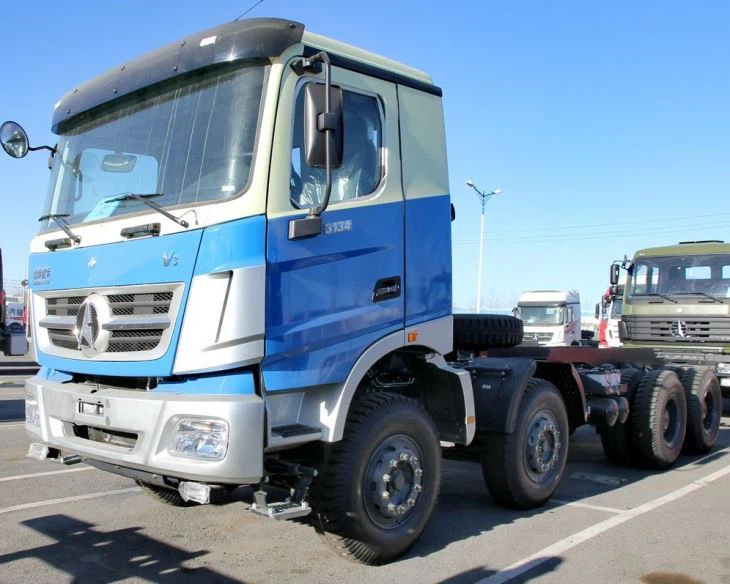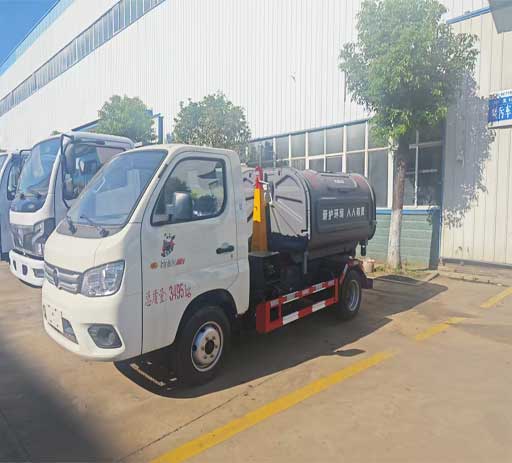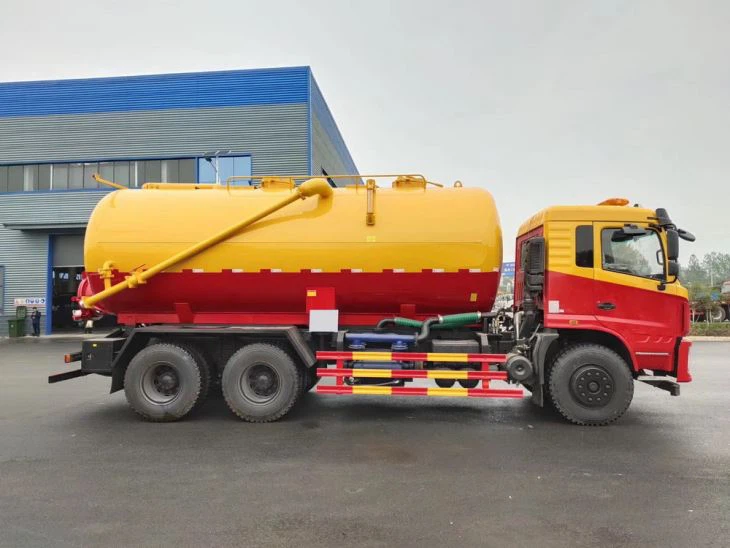Types of Trash Trucks: A Comprehensive Guide

Introduction
Trash trucks play a crucial role in maintaining urban cleanliness and environmental health. As cities grow, so does the need for efficient waste management solutions. This article explores the various types of trash trucks, their specific applications, and how they contribute to sustainable waste disposal. With an understanding of the different types available, municipalities and waste management companies can better tailor their services to meet community needs. Whether you’re a waste management professional or simply curious, this guide will provide valuable insights into the world of trash trucks.
1. Overview of Trash Truck Types
Trash trucks come in various shapes and configurations, each designed for specific waste collection tasks. The primary types include:
- Rear Loader Trucks
- Front Loader Trucks
- Side Loader Trucks
- Roll-Off Trucks
- Compactor Trucks
- Automated Refuse Trucks
2. Rear Loader Trucks
2.1 Description
Rear loader trucks are one of the most common types used for residential waste collection. These trucks feature a large dumping area at the back and are equipped with an overhead blade to compact the waste as it is loaded.
2.2 Key Features
- Ease of Use: They are simple and efficient for manual pickup.
- Compact Design: Offers a smaller footprint for tight urban spaces.
- Capacity: Usually holds between 10 to 30 cubic yards of waste.
2.3 Practical Examples
Municipalities often use rear loader trucks in residential neighborhoods, especially in areas with limited space for waste containers. Workers walk alongside the trucks, collecting trash at curbside and disposing of it into the rear compartment.
3. Front Loader Trucks
3.1 Description
Front loader trucks are designed for commercial waste collection, especially in industrial areas where bulk waste is common. These trucks have a front-mounted fork and a large compaction area.
3.2 Key Features
- High Capacity: Typically ranging from 20 to 40 cubic yards.
- Efficiency: Designed for picking up large bins that hold significant amounts of waste.
- Durability: Built to withstand heavy use in commercial settings.

3.3 Practical Examples
Front loader trucks are frequently utilized by businesses such as restaurants, grocery stores, and warehouses. These trucks can quickly service multiple locations, lifting large containers full of waste in a productive manner.

4. Side Loader Trucks
4.1 Description
Side loader trucks are an innovative solution that allows for automated waste collection. They can pick up bins from the side, reducing the need for manual labor.
4.2 Key Features
- Automated Collection: Reduces labor costs and increases efficiency.
- Reducing Footprint: Able to operate in narrower streets or crowded urban settings.
- Safety: Minimizes the risks associated with manual lifting and road exposure.
4.3 Practical Examples
Cities facing challenges with waste collection in crowded neighborhoods often turn to side loader trucks. They can operate in areas where traditional rear loader trucks would struggle due to space constraints.
5. Roll-Off Trucks
5.1 Description
Roll-off trucks are versatile vehicles used primarily for construction waste, recycling, and large-scale waste disposal. They feature an open-top container that can be rolled on and off the back of the truck.
5.2 Key Features
- Variety of Sizes: Roll-off containers can range from 10 to 40 cubic yards.
- Swappable Containers: Easily exchange containers to accommodate various waste types.
- Ideal for Construction: Perfect for jobsites needing temporary waste management solutions.
5.3 Practical Examples
Construction companies commonly use roll-off trucks to manage debris, while event organizers may utilize them for festivals or large gatherings where bulk waste is generated.
6. Compactor Trucks
6.1 Description
Compactor trucks are specially designed to compress refuse, allowing them to carry a larger volume of waste than non-compacting trucks.
6.2 Key Features
- Increased Efficiency: Can hold up to twice as much waste due to its compacting mechanism.
- Reduced Trips: Fewer trips to the landfill result in lower operating costs and environmental impact.
- Controlled Odor: The sealed design helps mitigate unpleasant odors from the waste.
6.3 Practical Examples

These trucks are particularly useful in urban settings where maximizing space is crucial. They are often employed for commercial waste collection where volume might exceed standard limits without compaction.
7. Automated Refuse Trucks
7.1 Description
Automated refuse trucks utilize advanced technology to collect waste with minimal human intervention, relying on mechanisms like robotic arms.
7.2 Key Features
- Labor Saving: Reduces the need for multiple crew members.
- Enhanced Safety: Operators remain inside the truck, away from traffic.
- Precision: The automated system ensures efficient collection without human error.
7.3 Practical Examples
Several cities have successfully implemented automated refuse trucks, observing reduced labor costs and increased collection efficiency. Cities such as San Francisco and Seattle are leading the way in using this technology.
8. Special-Purpose Trucks
8.1 Description
In addition to standard trash trucks, special-purpose vehicles exist to address specific waste management needs, including hazardous waste and recycling.
8.2 Key Features
- Designed for Specific Materials: These trucks come with features specifically tailored for the type of waste they handle.
- Compliance: Must meet stringent regulations regarding safety and environmental standards.
8.3 Practical Examples
Trucks designed for hazardous waste management are used in industries that produce chemicals, ensuring safe transport to disposal facilities. Recycling trucks often have compartments for sorting different materials during collection.
9. Maintaining Trash Trucks
9.1 Regular Maintenance
To ensure longevity and efficiency, regular maintenance is crucial for trash trucks. Key areas include:
- Oil Changes: Follow manufacturer guidelines for frequency.
- Brake Inspections: Essential for safety; should be checked regularly.
- Tire Maintenance: Regular checks and replacements can prevent accidents.
9.2 Tips for Fleet Management
- Tracking: Utilize telematics to monitor performance and reduce costs.
- Training: Regular training for operators to ensure they are up-to-date with safety protocols and new technology.
- Customization: Adapting trucks to specific community needs can enhance effectiveness.
10. The Future of Trash Trucks
The realm of waste management is evolving rapidly, with advancements in technology offering new solutions. Future developments may include:
- Electric and Hybrid Trucks: Aiming for a lower carbon footprint.
- Increased Automation: More sophisticated robotics to enhance efficiency.
- Smart Technology: Integrating sensors that monitor waste levels in bins to optimize collection routes.
FAQ Section
1. What is a trash truck typically used for?
Trash trucks are primarily used for collecting and transporting waste from residential, commercial, and industrial locations to disposal sites.
2. How often do trash trucks come?
The frequency of trash collection varies based on the municipality’s policies, typically weekly for residential areas, while commercial collections may vary between daily to weekly.
3. Can all types of trash trucks collect recyclable materials?
Not all trash trucks are designed for recycling. Specific recycling trucks are equipped with compartments to sort different recyclable materials during collection.
4. How do automated trash trucks work?
Automated trash trucks use robotic arms to lift bins and deposit their contents into the truck, minimizing manual labor and enhancing safety.
5. What is the average lifespan of a trash truck?
The average lifespan of a trash truck can range from 10 to 15 years, depending on maintenance and usage conditions.
6. Are there eco-friendly options for trash trucks?
Yes, many manufacturers are developing electric and hybrid trash trucks to reduce emissions and enhance energy efficiency in waste collection.
